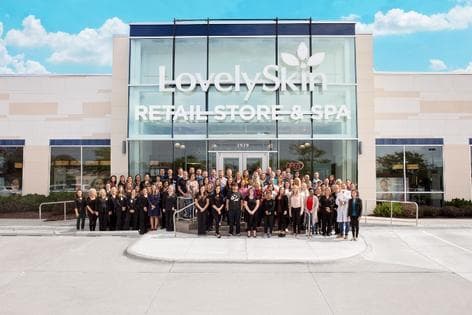In 1997, Amazon and eBay were just two years old, and Walmart.com had been around for just a year. And it was that year that Dr. Joel Schlessinger first had the idea to sell skin care products online.
A full-time, board-certified dermatologist, Schlessinger hired a few developers to build a shopping cart for what was his informational dermatology site, LovelySkin.com (opens in new tab), and the ecommerce site took its first orders in January 1999. Schlessinger already had a successful medical practice in Omaha, Neb., and saw the online store as a way to give more people access to a wide selection of skin care solutions and assist patients who had moved away but still needed skincare products.
What started as a tiny subsidiary of the medical practice became a successful business in its own right. LovelySkin partnered with more brands and expanded its product catalog to include makeup and cosmeceuticals (opens in new tab), hair care and skin care products, and hair care tools. LovelySkin even developed its own skin care lines, including AFA™ gels and moisturizers and FixMySkin healing balm, which Schlessinger developed with his son, Daniel Schlessinger, MD, when Daniel was just 12 years old.
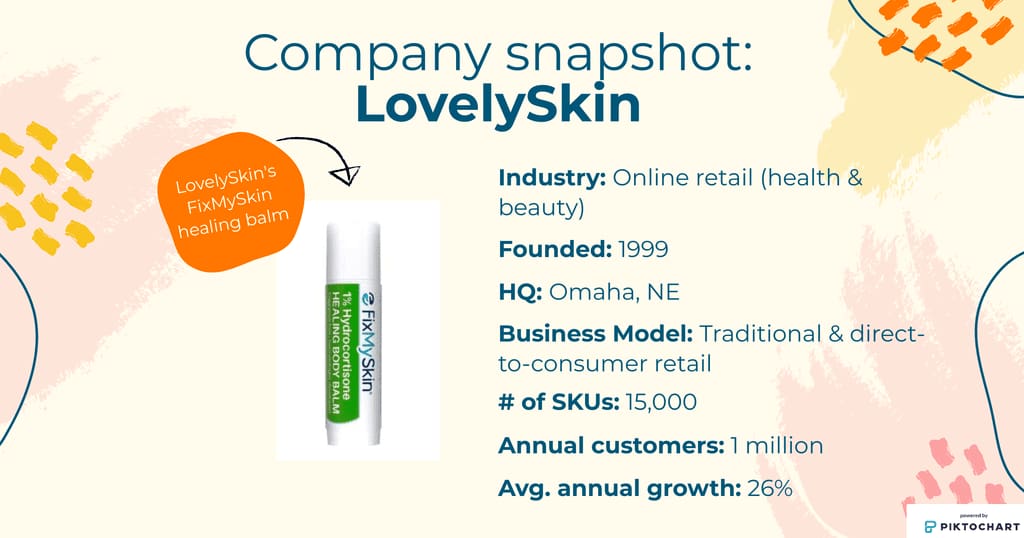
More than two decades after Schlessinger founded the company, it’s busier than ever. Like many online retailers, LovelySkin saw demand for its products spike during the coronavirus outbreak. Revenue was up 100% year-over-year in April and 50% in May. Two things contributed to that spike: competitors that relied on Fulfillment By Amazon (FBA) not being able to ship their goods to Amazon warehouses for nearly a month when it only accepted essential products and shoppers who couldn’t leave their house, no less visit local retailers, to get products.
LovelySkin also has an Amazon storefront, where orders rose from 2,000 to 6,000 per day from March to late April.
“It’s been a very significant increase,” Schlessinger said. “Clearly not every business has experienced such an impact – we consider ourselves to be incredibly fortunate. I am also very grateful that we were prepared to both scale and pivot as necessary.”
During that spike, the company had the right people and tools to keep up with the rush of orders. But that wasn’t always the case.
? Listen to our chat with LovelySkin founder Joel Schlessinger (opens in new tab) on the NetSuite Podcast, below. Read on for more of the LovelySkin story.
Fragmented data causes inventory issues
Over the years, LovelySkin added several subsidiaries, including a research center that conducts clinical research trials, a retail store/spa, a B2B brand called Olive & Delmar and an annual cosmetic surgery and dermatology conference.
This expansion of the business, along with the steady rise of the ecommerce site, led to expected growing pains:
- There were more vendors, inventory and orders to manage.
- Information lived in different systems, which made it far more challenging to stay on top of everything.
“If we had to pay a bill, we didn’t know if that bill was being paid for a product that had been received or could not be received fully due to an invoice error or a damaged product,” Schlessinger said. “You didn’t have a reliable window to see where you were in the payment cycle … we were just looking at it and seeing, ‘OK, we have this much in the bank so can we pay this and, if we do, will we be able to pay the bills to come?’
“But we had no ability to look forward, so it was always a guessing game and we defaulted to paying early for everything to make sure the bills were paid on time, even though that wasn’t in our best interest.”
“If we had to pay a bill, we didn’t know if that bill was being paid for a product that had been received or could not be received fully due to an invoice error or a damaged product. You didn’t have a reliable window to see where you were in the payment cycle.”
-Joel Schlessinger, LovelySkin founder
Without a real-time view of inventory or a clear picture of past sales trends, the business defaulted to carrying 2-3 months’ worth of inventory for most products. This was the best way to ensure it did not run out of popular items and disappoint customers.
“My overarching goal was to have LovelySkin provide outstanding customer service, and this was what it took to do so prior to our NetSuite implementation,” Schelssinger said. “It came at a huge price and the inventory improvements alone with NetSuite made up for the initial costs!”
A lack of unified data was especially problematic in the fast-moving health and beauty space, where customer trends and buying habits change quickly. LovelySkin has seen massive increases in demand for certain products after select items appeared on national television shows like “Oprah Winfrey” and “Dr. Oz.” There is also seasonal demand for some items, like sunscreen.
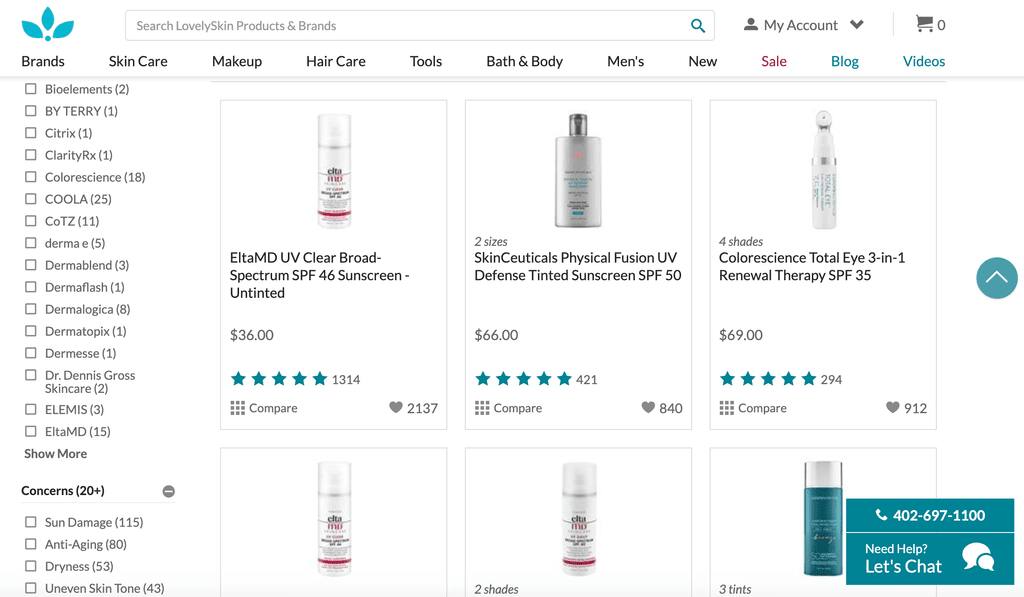 LovelySkin’s ecommerce site sees seasonal surges in demand for products such as sunscreen.
LovelySkin’s ecommerce site sees seasonal surges in demand for products such as sunscreen.
“There was very little we could do to plan for [spikes in demand], and oftentimes we could just order a large amount of inventory and then when the trend died down, be left with a surplus,” said Chrissy Kersting, purchasing manager.
LovelySkin also struggled to keep track of all the parts needed for products it manufactures, like bottles, caps, labels and raw ingredients. The organization relied on manual counts and spreadsheets to calculate current stock of these components.
At that time, the company used QuickBooks for financials and homegrown systems for other functions, like inventory management, order management and ecommerce. But the solutions were not integrated and QuickBooks was “woefully inadequate” for tracking vendors, accounts payable and accounts receivable for multiple subsidiaries, Schlessinger said.
“Our data was very fragmented and in multiple locations, including different systems,” Kersting added. “Sometimes we were bookkeeping in Excel files, nothing was equal across the board, and it was very hard to get information about all the pieces of our company.”
Ready for order surges
By 2014, as sales climbed 25% annually, Schlessinger knew it was time to move to a business management platform that could handle the demands of a company like LovelySkin. After evaluating several vendors, LovelySkin selected NetSuite and implemented the solution in 2015.
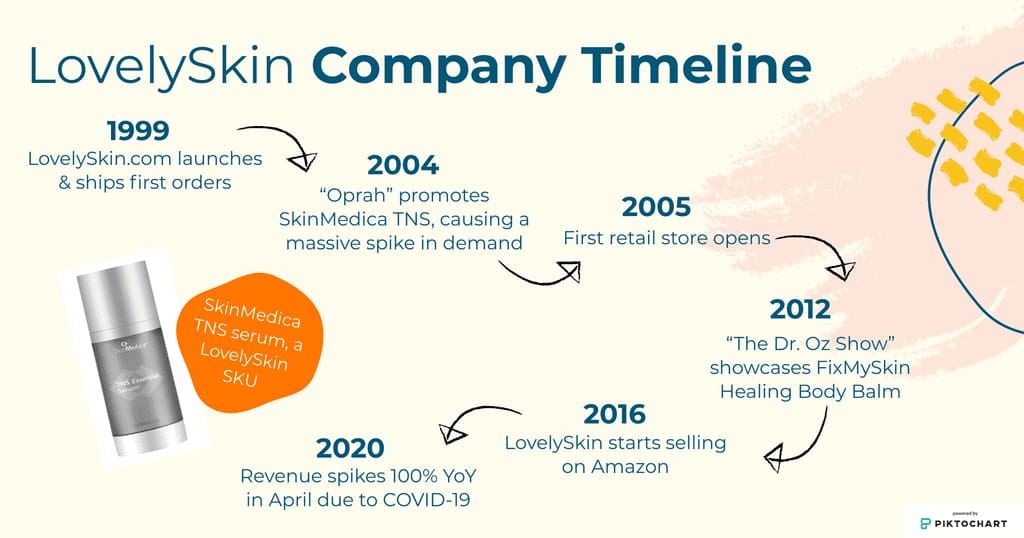
A unified platform with integrated applications for accounting, inventory, orders and customer service replaced the jumble of systems the business previously had. It can see inventory in real time and sort by brand or product, which has enabled the purchasing team to keep leaner inventory and avoid overstocks. It also allows the team to see a certain item taking off and immediately place a replenishment order.
This became extremely valuable when demand for certain products was six times higher than usual in the early days of the pandemic.
“I can’t even imagine trying to manage this situation with QuickBooks,” Kersting said. “To not have the level of visibility into everything that we have with NetSuite during this unprecedented time, I honestly don’t know that we would’ve been able to navigate the waters.”
“I can’t even imagine trying to manage this [COVID-19 spike in demand] with QuickBooks.”
-Chrissy Kersting, LovelySkin purchasing manager
Although the dramatic increase in sales this spring was unexpected, NetSuite’s demand planning tool (opens in new tab) helps LovelySkin prepare for more predictable fluctuations. For example, LovelySkin can review historical numbers to predict the amount of inventory needed to cover a flood of orders after a TV show appearance or after a major social media influencer promotes an eyelash serum or moisturizer.
On the other hand, if there’s a lot of makeup sitting in the warehouse, but sales have slowed for a given category, Kersting can create a promotion to increase inventory turn. Or she might choose to market a just-released SkinMedica TNS serum to customers who previously purchased SkinMedica products.
“NetSuite’s open framework has perfectly complemented our custom ecommerce platform,” Director of Ecommerce Logan Chard said. “It has allowed us to have one source of truth for all customer and order data and is flexible enough to meet the business needs of our internal systems, from ecommerce to fulfillment to customer service.”
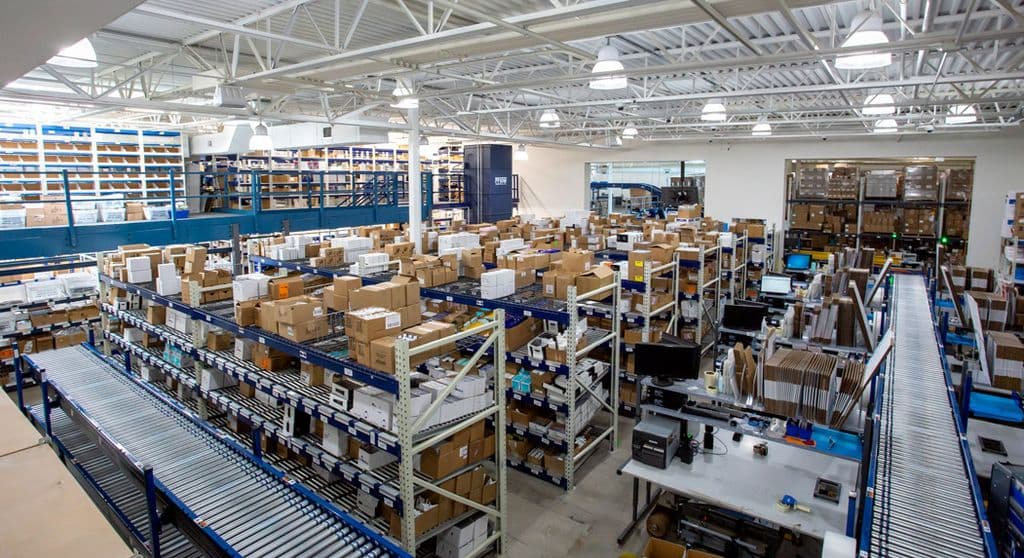
Production runs for LovelySkin’s own formulations are no longer a guessing game, as NetSuite tracks product orders and expected delivery date for each component. Additionally, the solution helps the business determine a price that’s both appealing to customers and profitable.
“NetSuite is the perfect convergence point for different datasets,” Josh Messerschmitt, director of IT infrastructure at LovelySkin, said. “We are able to see customer interactions, the status of order lines, inventory detail, and shipment information at-a-glance from a single application.”
Still going strong after 20 years
Though LovelySkin is hardly new to online retail, it continues to grow at an impressive clip. Over the past five years, the company’s staff has tripled, online order volume is up 600-700%, and total sales double every 3-4 years.
More automation and efficiency across the organization mean the business has not had to add employees at the same rate at which it grows. The platform has allowed Kersting and other leaders to spend more time on bigger projects that will generate savings or improve the customer experience.
Whatever comes next, LovelySkin will be ready.
“The fact that we’re now six, seven years into NetSuite and we’re still using it, still enjoying it, that says something in itself,” Schlessinger said. “When we started to think about using ERP, I talked to several people who had ERPs and I said, ‘Tell me about your ERP,’ and it was just a look of pain that came across their face.”
The experience with NetSuite ERP, however, is lovely.
Listen to LovelySkin’s full story on the latest episode of “The NetSuite Podcast.” Listen on Apple Podcasts (opens in new tab), Spotify (opens in new tab) and YouTube (opens in new tab).
